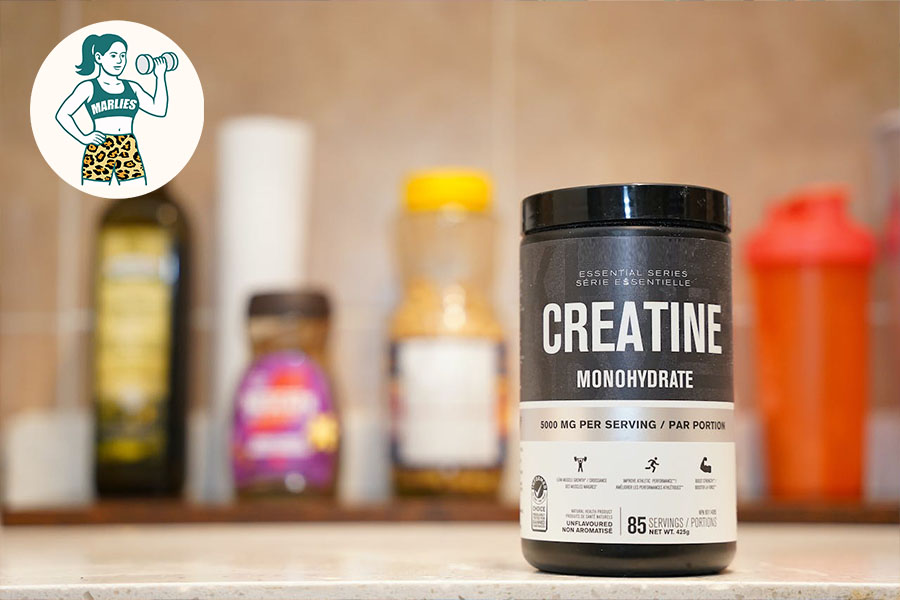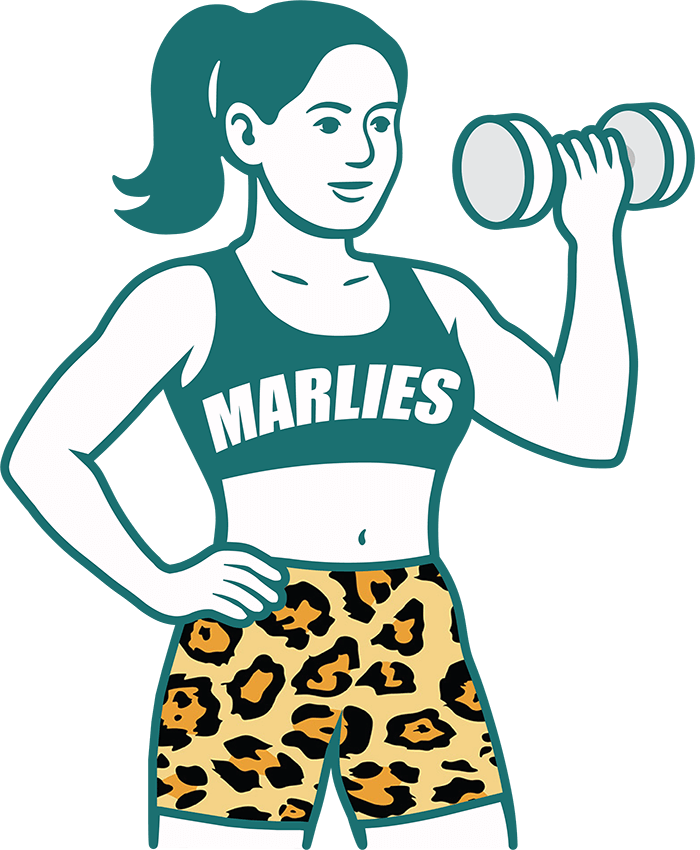Creatine Benefits: How Much You Need, Why and Myth Busting

Beyond the gym, creatine may support cognition, energy, and healthy ageing.
What is creatine (and why should you care)?
Creatine monohydrate is a compound your body makes (and you also get from food like red meat and fish). So what are the creatine benefits? It helps recycle ATP—the energy currency your cells use—especially during short, intense efforts (sprints, heavy lifts, jumps).
More available creatine = faster energy recycling = you can squeeze out more quality reps and recover quicker between sets.
How much creatine do you need?
The gold standard for maximum creatine benefits (for healthy adults):
- Daily: 3–5 g creatine monohydrate (no need to cycle).
- Bodyweight option: ~0.03 g/kg/day (e.g., ~2–3 g for 60–90 kg), but most people simply take 3–5 g.
- Loading (optional): 20 g/day split into 4 x 5 g for 5–7 days, then down to 3–5 g/day. You’ll saturate muscle stores faster, but you’ll get there in a few weeks without loading too.
Timing? Take it when it fits your routine—consistency beats timing. With a meal or post-workout is convenient and may slightly aid uptake.
Hydration: Creatine draws water into muscle; drink water normally (you don’t need to drown yourself).
The science in plain English
- Performance: One of the major creatine benefits is it consistently improves strength, power, and high-intensity work capacity. Think heavier sets, extra reps, better sprint repeats.
- Muscle: Helps increase lean mass over weeks by enabling more high-quality training volume and supporting cell energy and hydration (cell volumisation).
- Recovery: Can reduce fatigue between sets and may support faster progress across training blocks.
Creatine Monohydrate is the form used in the vast majority of studies. Fancy versions rarely outperform it in real-world outcomes.
Common myths—busted
- “Creatine is a steroid.”
Nope. It’s not hormonal. It’s a legal, naturally occurring compound that supports cellular energy. - “It wrecks your kidneys.”
Large bodies of research show no harm in healthy people at recommended doses. If you have kidney disease or are at risk, speak to your GP before using any supplement. - “It just causes water bloat.”
Early on, you’ll store a little extra water inside the muscle, not under the skin. That’s generally a good thing for performance and fullness. - “Creatine makes you lose hair.”
Evidence is not conclusive. One small study linked creatine to changes in DHT; longer-term research hasn’t shown it causes hair loss. If you’re worried, monitor and decide accordingly. - “You must take it pre-workout.”
Timing is minor. Take it whenever you’ll remember. - “Caffeine cancels creatine benefits.”
Mixed data. Daily coffee is fine for most people. Very high acute caffeine might blunt effects in some—if you’re concerned, separate them by a few hours.
Powder or gummies?
Creatine Monohydrate Powder (winner for most people)
- Pros: Cheapest per gram, pure (my favourite is MyProtein or other reputable brands), easy to get exact 3–5 g dose, mixes into shakes/yoghurt.
- Cons: You need a scoop and something to mix it with and if you are like me, can get messy!
Creatine Gummies
- Pros: Convenient, tasty, travel-friendly.
- Cons: Often under-dosed per gummy (you might need 4–8+ pieces to reach 3–5 g), more expensive per gram, sometimes added sugars/gelatine.
Bottom line: If you care about value, accuracy, and research-backed results, choose powder. Gummies are fine as a backup for busy days or travel.
Creatine Benefits outside of the gym
While creatine shines for strength and power, there’s growing (though varied) evidence for benefits beyond lifting:
- Cognitive support: May aid short-term memory and mental fatigue—especially in low-sleep or high-stress scenarios, and in people with low dietary creatine (e.g., some vegetarians/vegans).
- Healthy ageing: Potential support for muscle function and daily vitality as we get older (helps maintain independence by supporting strength and power).
- Mood & brain health: Early research suggests possible benefits in mood and neuroprotection; promising but not a cure-all.
- Bone & injury rehab: By supporting lean mass and training quality, creatine can indirectly help during rehab phases and for bone-loading exercise.
Note: Evidence strength varies by outcome; creatine isn’t a replacement for sleep, nutrition, or medical care.
How to take it (step-by-step)
- Pick a creatine monohydrate powder you like, maybe a flavoured one.
- Dose: 3–5 g once daily (or load if you want faster saturation).
- Mix: In water, juice, or a smoothie; or stir into yoghurt/oats.
- Stay consistent: Make it part of a routine you won’t forget.
- Train well: Creatine amplifies good training—follow a progressive, well-designed plan.
Safety, side effects & who should be cautious
- Typical side effects: Mild stomach upset if you take large single doses; split or take with food if needed.
- Blood tests: Creatinine (a breakdown product) may rise on labs without indicating kidney damage—inform your GP you use creatine.
- Check with your GP if you have kidney disease, hypertension requiring medication, are pregnant or breastfeeding, or taking medications that affect kidney function.
- Teens: Generally considered safe at recommended doses under parental/coach and healthcare guidance, but food, sleep, and good coaching come first.
Quick FAQ
- Best form? Creatine monohydrate.
- How long to see results? With loading: ~1 week. Without: ~3–4 weeks.
- Do I need to cycle? No.
- Vegan/vegetarian? You may benefit even more due to lower dietary intake—3–5 g/day still applies.
Conclusion
If you want a simple, proven supplement that helps you lift more, recover better, and potentially support brain function and healthy ageing, creatine monohydrate at 3–5 g/day is hard to beat. Choose powder for best value, stick with it consistently, and pair it with smart training, protein-forward meals, and sleep.
Let’s Talk

MARLIES FITNESS
Topics
More Posts
Get In Touch
Personal Trainer Exeter
At Marlies Fitness, we believe that fitness is about more than just the hour you spend in the gym — it’s about the choices you make every day that shape a stronger, healthier, and happier you. That’s why we created Insights: a space dedicated to sharing practical advice, expert guidance, and motivation to help you on your journey.
Here you’ll find tips that go beyond workouts and weights. From simple nutrition swaps that make eating well easier, to mindset tools that keep you motivated when life gets busy, our goal is to give you the knowledge you need to succeed — without the confusing jargon or overcomplicated routines.

Cardio vs Weights: What’s Best for Women’s Fat Loss?
If your goal is fat loss, you’ve probably wondered which works better: cardio or weights.
Many women believe endless cardio is the key to burning fat — but that’s only part of the picture. The truth is, both cardio and strength training have their place, but one is far more powerful for shaping your body, boosting metabolism, and keeping the weight off long-term.
As a personal trainer, I see women wasting hours on the treadmill when they could be getting faster, stronger, and leaner results in less time. Let’s break it down.

Creatine Benefits: How Much You Need, Why and Myth Busting
Creatine is one of the most researched, safe, and effective supplements for strength, power, and lean mass. Most people do great on 3–5 g of creatine monohydrate per day. Loading is optional. Powder beats gummies for cost and dose.
Beyond the gym, creatine may support cognition, energy, and healthy ageing.

8 Nutrition Tips for Busy Women | Healthy Eating for Results
Let’s be clear: I hate the phrase “cheat day.” It suggests you’ve done something wrong by enjoying food. This picture is me, smashing the best French Toast in the world whilst in Las Vegas!
In reality, balance is key. No single meal or day ruins your progress — it’s the long-term habits that matter.
Life is busy. Between work, family, and everything else on your to-do list, it’s no surprise that nutrition often takes a back seat. Many women end up grabbing quick snacks, skipping meals, or relying on takeaways then feel frustrated when they don’t see results.
The good news? With a few simple strategies, you can fuel your body, save time, and stay on track with your goals — without spending hours in the kitchen or feeling guilty about what you eat.
Here are my top nutrition tips for busy women who want real results.

